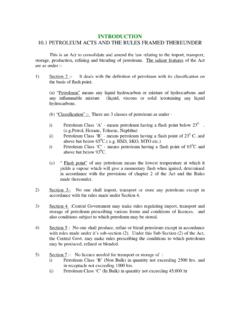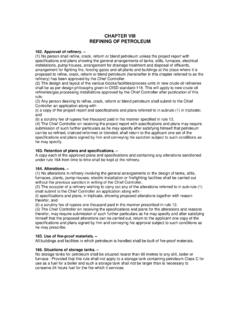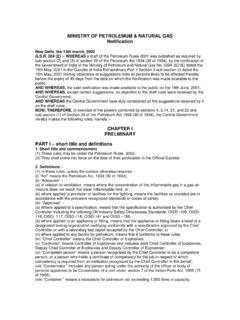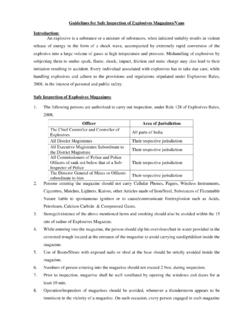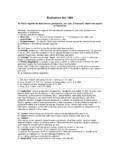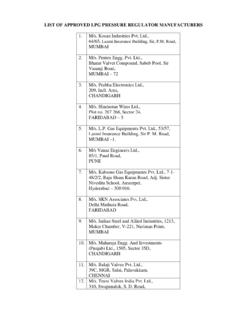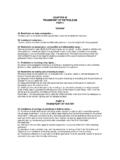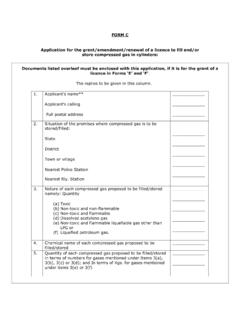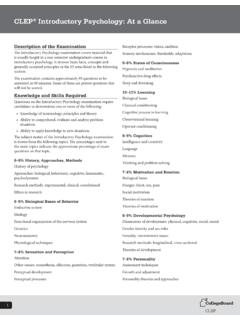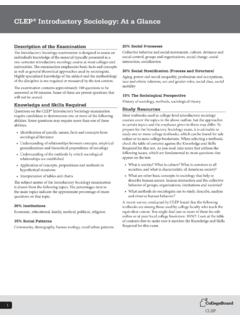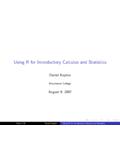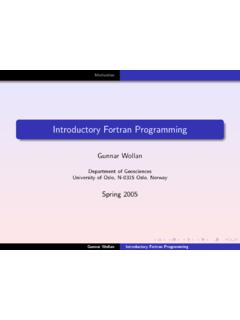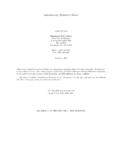Transcription of INTRODUCTORY
1 INTRODUCTORY The Petroleum Act, 1934, is an Act to consolidate and amend the law relating to the import, transport, storage, production, refining and blending of petroleum. Petroleum may be any liquid hydrocarbon or mixture of hydrocarbons, and inflammable mixture (liquid, viscous or solid) containing any hydrocarbon, and includes natural gas and refinery gas. The Indian Petroleum Act, 1899 was passed at a time when the use of petroleum, especially dangerous petroleum or petrol, was limited and with the great developments in the use of petroleum it had become unsuitable in several ways.
2 The attention of the Government of India was drawn to the inconveniences caused due to the existence in different provinces of separate sets of rules regulating the importation, possession and transport of petroleum. The Indian Petroleum Act, 1899 did not permit the issue by the Government of India of a set of rules applicable throughout British India, and the only way in which it had been possible to secure uniformity had been made by the issue by Local Governments from time to time of similar rules with the sanction of the Central Government.
3 This led to consultations of the Local Governments and it was felt necessary to revise the Act in 1925-26. As a result the Local Governments agreed that the rule-making power should be transferred to the Central Government. In addition, a number of changes had been suggested. Thus in order to secure the uniformity, the Central Government was empowered to frame rules applicable throughout India. The Petroleum Act, 1934, was assented by the then Governor-General on 6-9-1934, and it came into force with effect from 30-3-1937.
4 The aim and object of the Act stated was to consolidate and amend the law relating to import, transport, storage, production, refining and blending of Petroleum and other inflammable substances as they existed then. In addition to the `Preliminary' portion and the final `Supplemental' Chapter, it contained three separate chapters. Chapter I relating to Control of Petroleum and Chapter II to its testing while Chapter III contained the necessary penal provisions. Subsequently due to the political changes in the set up and the prevailing circumstances various Amending Acts and Adaptation Orders had to be passed both in the pre-Independence period and thereafter.
5 This booklet reproducing the Petroleum Act, 1934, with short comments along with Petroleum Rules, 1976 would serve the purpose of having an overall view of the subject in issue. A creative feedback from the learned readers, bringing to our notice any mistake, error or omission or discrepancy that might have crept in this book in spite of our sincere efforts to avoid those, is most welcome, for it will help us improve the quality, style and presentation of the book in the forthcoming editions.

